Santa Barbara Fishermen and Enviros Team Up to Remove Lobster Traps from Local Beaches
S.B. Channelkeeper, Commercial Fishermen of S.B., and Tidy Seas Clean Up Thousands of Pounds’ Worth of Traps and Debris from Coastline

In a special collaboration the weekend before Earth Day, Santa Barbara commercial fishermen and environmental groups joined forces to track down and clean up the “lost” lobster traps that washed ashore between Goleta Beach and More Mesa.
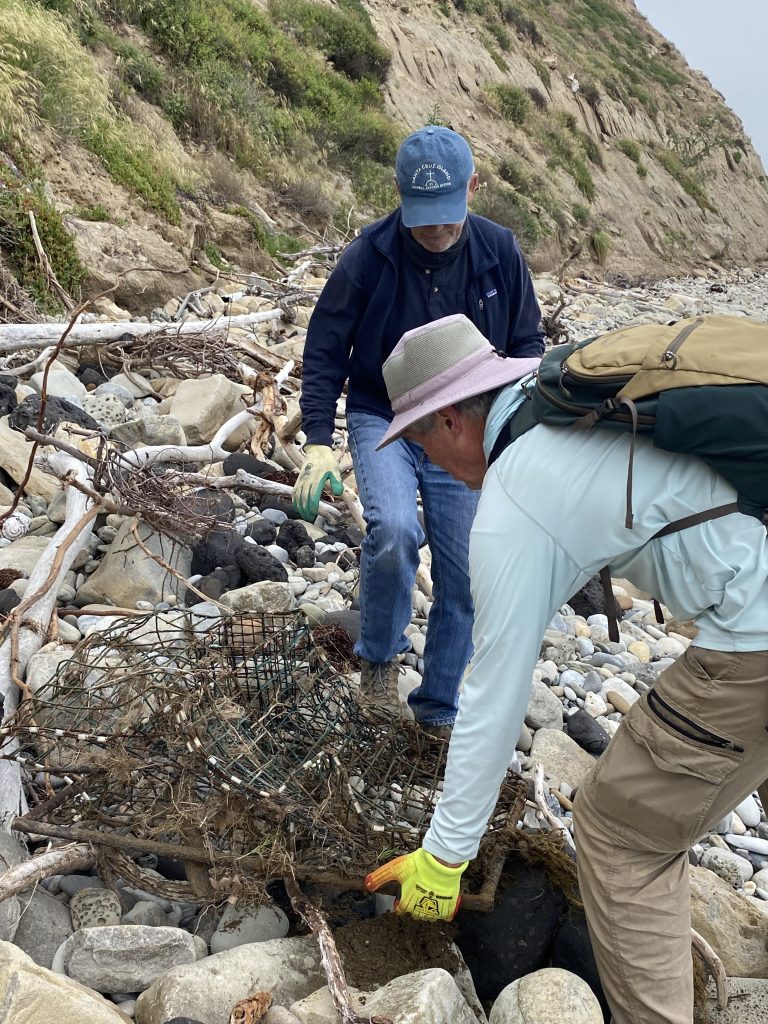
Twenty-five volunteers with Santa Barbara Channelkeeper and members of the Commercial Fishermen of Santa Barbara and Tidy Seas removed more than 50 lobster traps from the coastline, along with all the junk that got tangled up in them or washed up beside them.
Chris Voss, president of the Commercial Fishermen of Santa Barbara, estimates that they removed nearly 6,000 pounds’ worth of stuff — including metal fencing, a few bags of trash, construction materials, two shopping carts, and a 200 pound truck tire — off the beach.
“I was born here in Santa Barbara — I would go out with the Sierra Club as a child and clean up trash, and my mom was very involved in the local efforts to keep our environment clean,” Voss recounted. “It’s a natural thing for me to want to engage in this kind of activity, simply because I’ve been doing it since I was a little boy.”
Voss explained that he and the other fishermen are “conscious of the fact” that they “don’t have any special right to make a huge mess on our beaches.” The weekend effort marked the fourth year of collaborative shoreline cleanups between the group and Channelkeeper.
During the lobster season, wave action and stormy weather can dislodge traps set by fishermen and send them adrift, according to Channelkeeper’s news release. Approximately 6,500 traps are reported lost off the California coast each fishing season.
“When lost traps are carried by currents, they can entangle marine organisms, and pose safety hazards to vessels,” Channelkeeper says. “When they wash up on shore as debris, they can also be hazardous to beachgoers and wildlife.”
Without regular cleanups, dozens of traps can accumulate on certain beaches and pile up over time. Around four years ago, Channelkeeper noticed that the stretch of beach between Haskell’s and Ellwood had become home to a lot of old, rusty traps, weighed down by rocks and taking up space in hard-to-reach areas of the beach.
“And so we thought, what a neat opportunity to try and actually coordinate a group to work on cleaning up these traps,” explained Molly Troup, Channelkeeper’s science and policy manager.
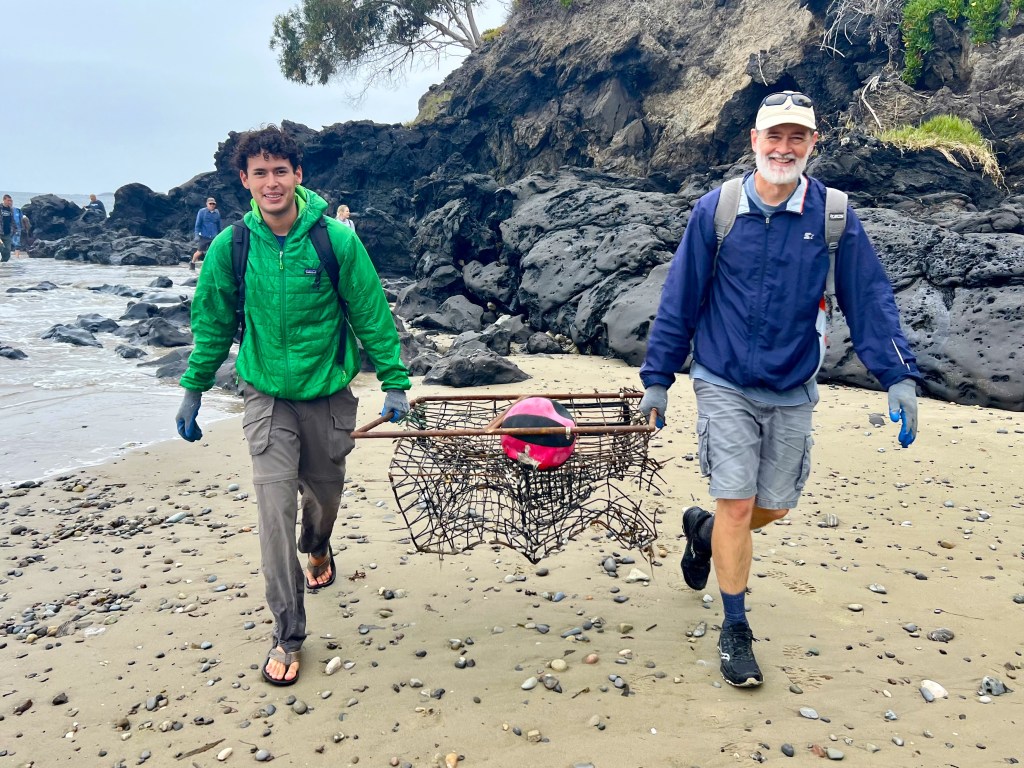
But the traps are heavy and difficult to carry over long distances. So the idea, Troup said, was that they could free the traps from the shore by digging them out or removing any rocks anchoring them in place, put them into the water where the fishermen would be able to pull them up to their boat, and then bring them to the harbor.
“Every year since that first cleanup four years ago, we’ve continued to build on that partnership and coordinate a spring cleanup that happens after the closure of the current lobster season, which runs from September through March,” she added. “It’s been a really successful and positive collaboration.”
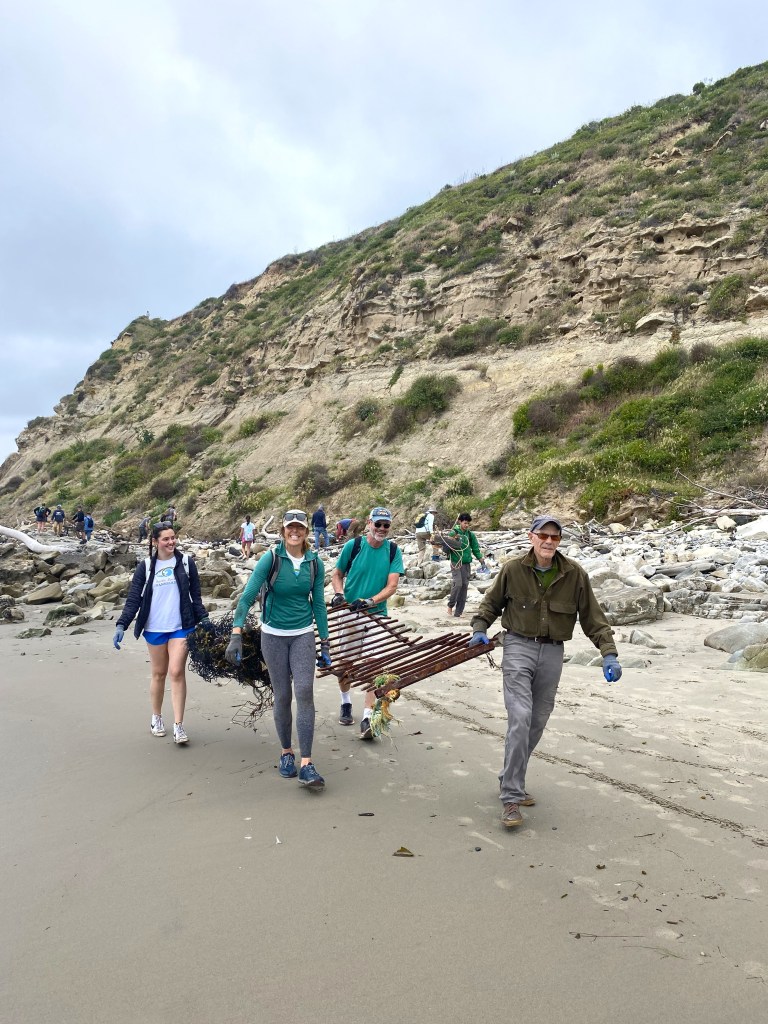
In recent months, volunteers with Channelkeeper’s Watershed Brigade helped the organization locate lost traps, which led to discovering a high concentration of traps between Goleta Beach and More Mesa. As the 2024 lobster season approached its end date in March, Channelkeeper staff and local fishermen began planning to clear traps from this stretch of beach.
During Saturday’s cleanup, volunteers pulled the heavy, metal-framed traps from the rocks along the shore and carried them to collection points on the beach. From there, the traps were clipped onto a buoyed rope and hauled through the surf to one of two fishing vessels. Members of the Commercial Fishermen ferried the buoy line back and forth from boat to shore by longboard and kayak, and would load the traps onboard the vessels to transport them to the harbor for proper disposal.
Through a trap-tagging requirement implemented in 2017, the hope is that fishermen will be able to track down their own lost traps and pick them up throughout the season. But “if they don’t, or if there’s no tag on there, then that’s where volunteers come in,” Troup said.
Some of the material can be reused, such as the frame, but most of the time the traps are in pretty poor condition, as they tend to get pretty beat up on their way to the shore. “So a lot of the rest of the trap will end up going to the landfill,” Troup explained. “But there’s a lot of plastic and other components of the trap. If they remain on the beach, those parts will break down and continue to pollute our beaches.”
“Our volunteers really enjoy getting out and pulling up their sleeves to do some hard work, and seeing an impactful result of thousands of pounds of trash cleared off the beach,” Troup continued. “It’s pretty impressive to see the accomplishment after the end of just three-hour volunteer periods.”
Premier Events
Sat, Nov 02
11:00 AM
Santa Barbara
Mesa Artist Studio Tour
Sun, Nov 03
11:00 AM
Santa Barbara
Mesa Artist Studio Tour
Thu, Oct 31
3:00 PM
Goleta
The Towbes Group Presents: Spooktacular
Thu, Oct 31
5:00 PM
Montecito
A Hauntingly Elegant Halloween Evening at San Ysidro
Thu, Oct 31
7:00 PM
Santa Barbara
Carr Winery Presents: Halloween Night
Thu, Oct 31
7:00 PM
Santa Barbara
Santa Barbara Halloween Bar Crawl
Fri, Nov 01
5:00 PM
Santa Barbara
Chaucer’s Books 50th Birthday Bash
Fri, Nov 01
6:00 PM
Santa Barbara
Friendship Center’s 12th Annual Wine Down
Fri, Nov 01
8:00 PM
Santa Ynez
Chumash Casino Resort Presents En Vogue
Sat, Nov 02
9:30 AM
SANTA BARBARA
The Santa Bárbara Mission Archive-Library (SBMAL) Open House: November
Sat, Nov 02
11:00 AM
Santa Barbara
Mesa Artist Studio Tour
Sat, Nov 02
1:00 PM
Santa Barbara
Chicano Culture de S.B. Annual S.B. Mural Bike Ride
Sat, Nov 02 11:00 AM
Santa Barbara
Mesa Artist Studio Tour
Sun, Nov 03 11:00 AM
Santa Barbara
Mesa Artist Studio Tour
Thu, Oct 31 3:00 PM
Goleta
The Towbes Group Presents: Spooktacular
Thu, Oct 31 5:00 PM
Montecito
A Hauntingly Elegant Halloween Evening at San Ysidro
Thu, Oct 31 7:00 PM
Santa Barbara
Carr Winery Presents: Halloween Night
Thu, Oct 31 7:00 PM
Santa Barbara
Santa Barbara Halloween Bar Crawl
Fri, Nov 01 5:00 PM
Santa Barbara
Chaucer’s Books 50th Birthday Bash
Fri, Nov 01 6:00 PM
Santa Barbara
Friendship Center’s 12th Annual Wine Down
Fri, Nov 01 8:00 PM
Santa Ynez
Chumash Casino Resort Presents En Vogue
Sat, Nov 02 9:30 AM
SANTA BARBARA
The Santa Bárbara Mission Archive-Library (SBMAL) Open House: November
Sat, Nov 02 11:00 AM
Santa Barbara
Mesa Artist Studio Tour
Sat, Nov 02 1:00 PM
Santa Barbara

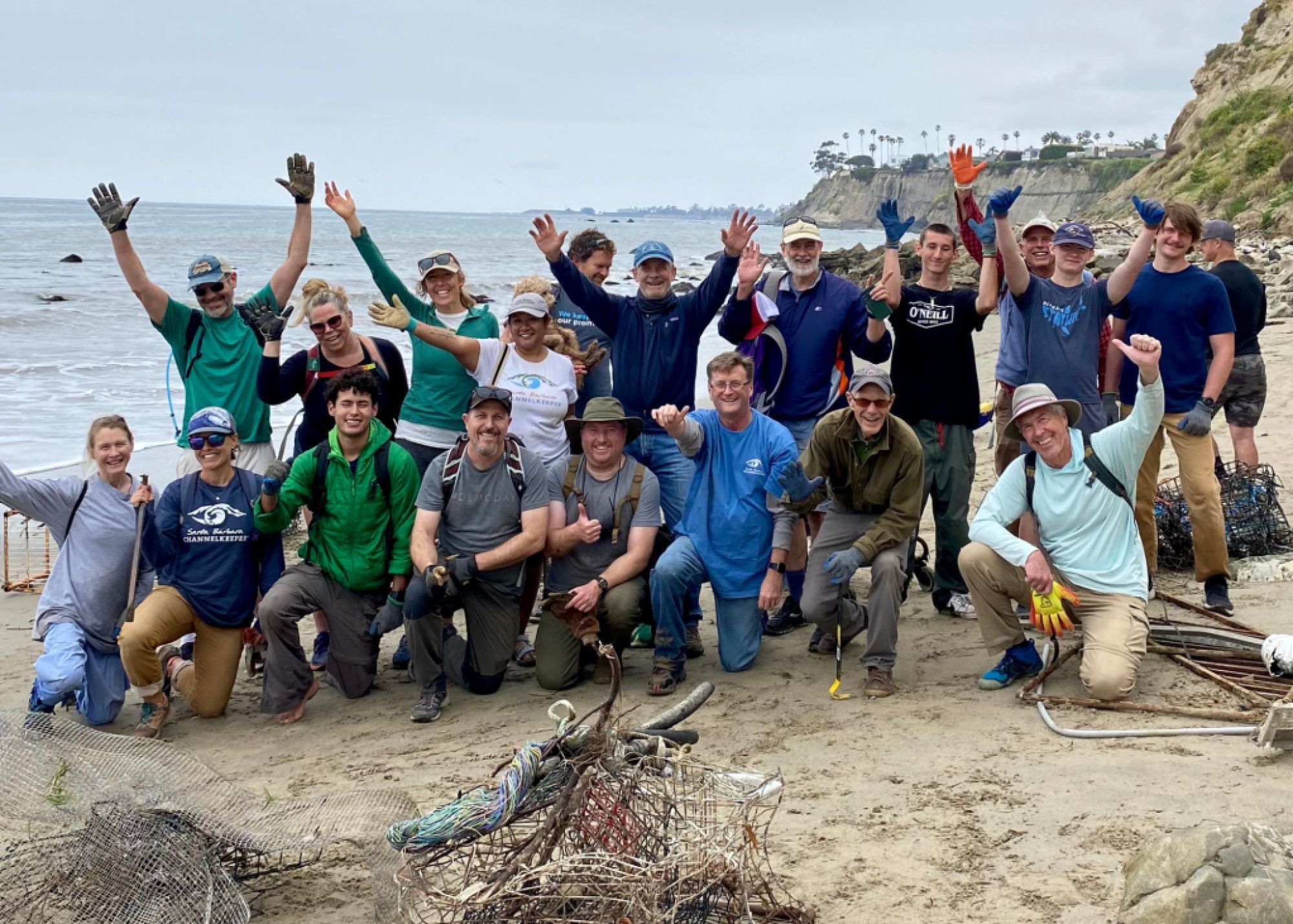
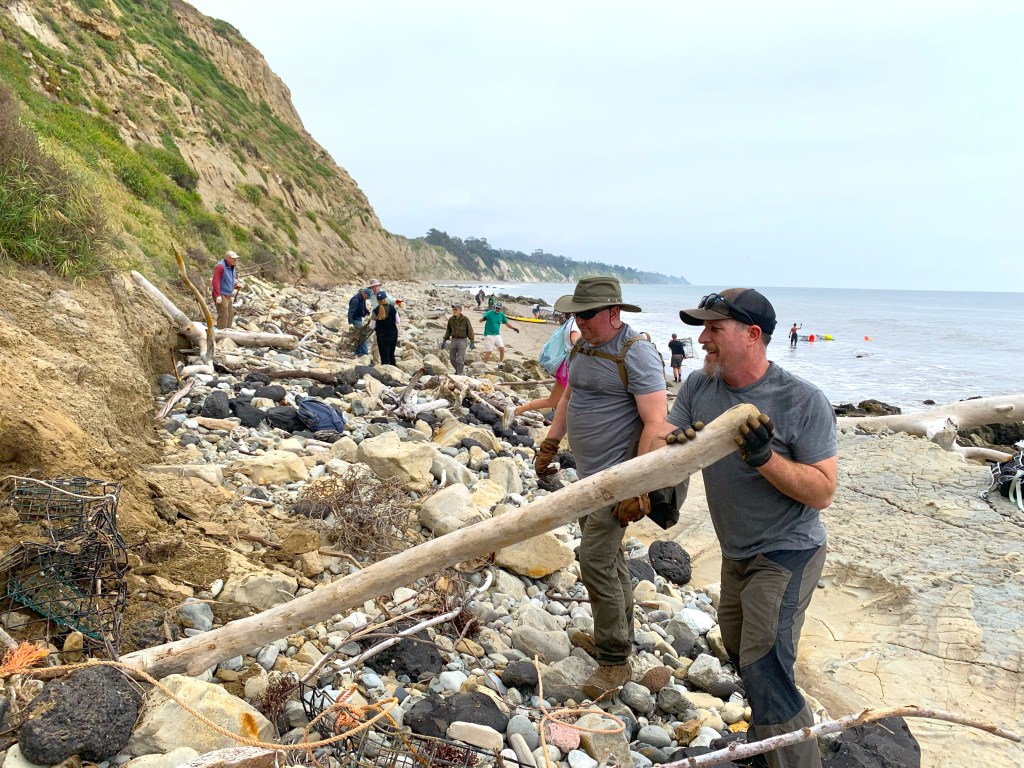



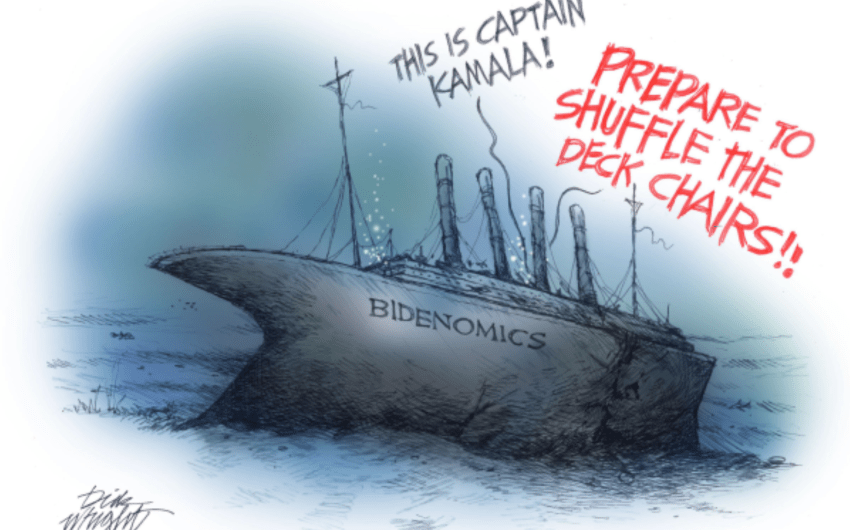



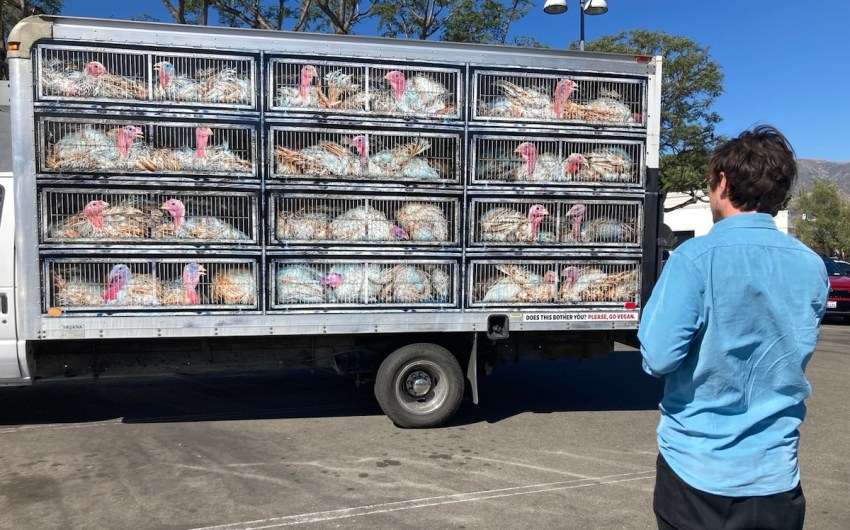












You must be logged in to post a comment.